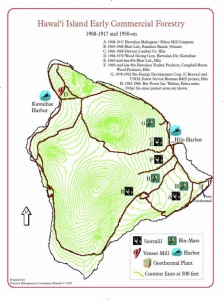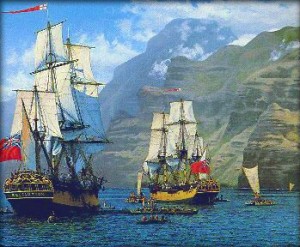Pacific Business News reports “Big Island office on USDA list of closures”
Pacific Business News relayed the news from KHON today that the Big Island Department of Agriculture office is on the list of closures…. read moreÂ
Research, Visit and Discover
If you would like to find out more about the forests and forest industries of Hawai’i, here are a few sites and places to research, visit and discover.
Government
- Department of Hawaiian Home Lands
- Department of Land and Natural Resources – Division of Forestry and Wildlife
- State of Hawaii Forestry Website
Industry
Alliances and Partnerships
For Students and Further Research
- College of Tropical Agriculture and Human Resources – Hawai`i Forestry Extension
- State of Hawaii Kids Forest and Wildlife
- Trees of Hawai`i
- Hawaii Agriculture Research Center
- Hawaii Experimental Tropical Forest
- Pacific Island Ecosystems Research Center
- Commonly Planted Trees
- Native Trees of Hawai`i
- Hawaiian Native Plant Propagation Database
- Pacific Southwest Research Station USDA Forest Service
- Hawaii Tropical Forest Recovery Action Plan
- Hawaii Tropical Forest Recovery Act
- Puu Waawaa Dry Forest
- Laupahoehoe Wet Forest
Visit and Discover
- Bishop Museum
- Ka`upulehu Dryland Forest
- National Tropical Botanical Garden
- Amy B.H. Greenwell Ethnobotanical Garden
- Na ‘Āina Kai Botanical Garden
- Pana ‘ewa Zoo Discovery Forest
20th Century Commercial Forest Products Activities Hawai’i Island
Hawai’i Island Early Commercial Industry 1908-1917 and 1950-on
Click image to enlarge
Image copyright Forestry Management Consultants Hawai’i 1999
Late 1700s Timber Resources Meet Needs of Growing Industries
With the opening of Hawai‘i to the outside world after the arrival of Captain James Cook in 1778, Hawaii’s timber resources supplied the needs, particularly for fuel wood, of the many trading and whaling vessels that plied the Pacific maritime routes in the late 1700s and the 1800s.
In addition, as many as six to seven hundred cords a year (1444 m3 – 1685 m3/282,000 fbm – 329000 fbm) of fuel wood were used at the mills of the growing sugar industry in Hawai‘i. This practice lasted approximately 50 years until the mid 1880s when the majority of plantations had converted to coal or new technologies that used residue from sugar cane–-called bagasse–for fuel.
Image–Captain Cook’s Moment of Discovery Kaua’i January 19, 1778. Courtesy, Artist, Raymond A. Massey, Ship Store Galleries, Kapaa, Kaua’i.


